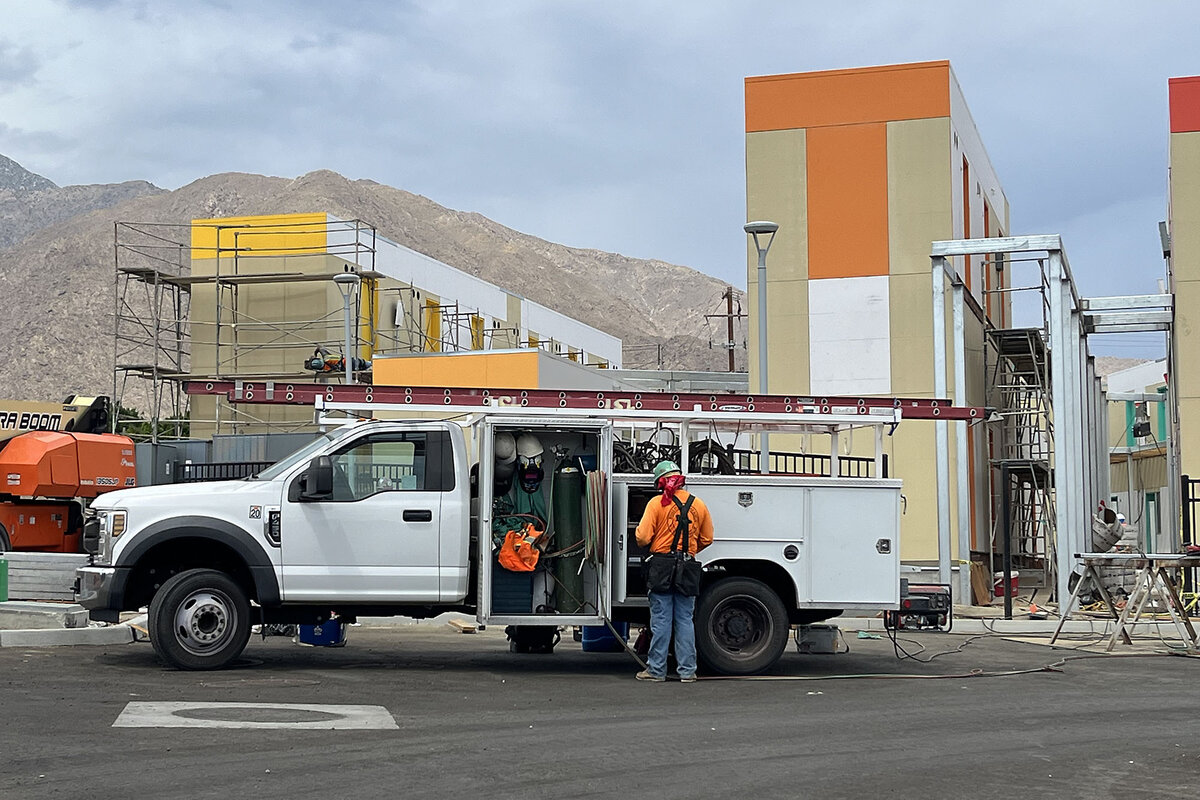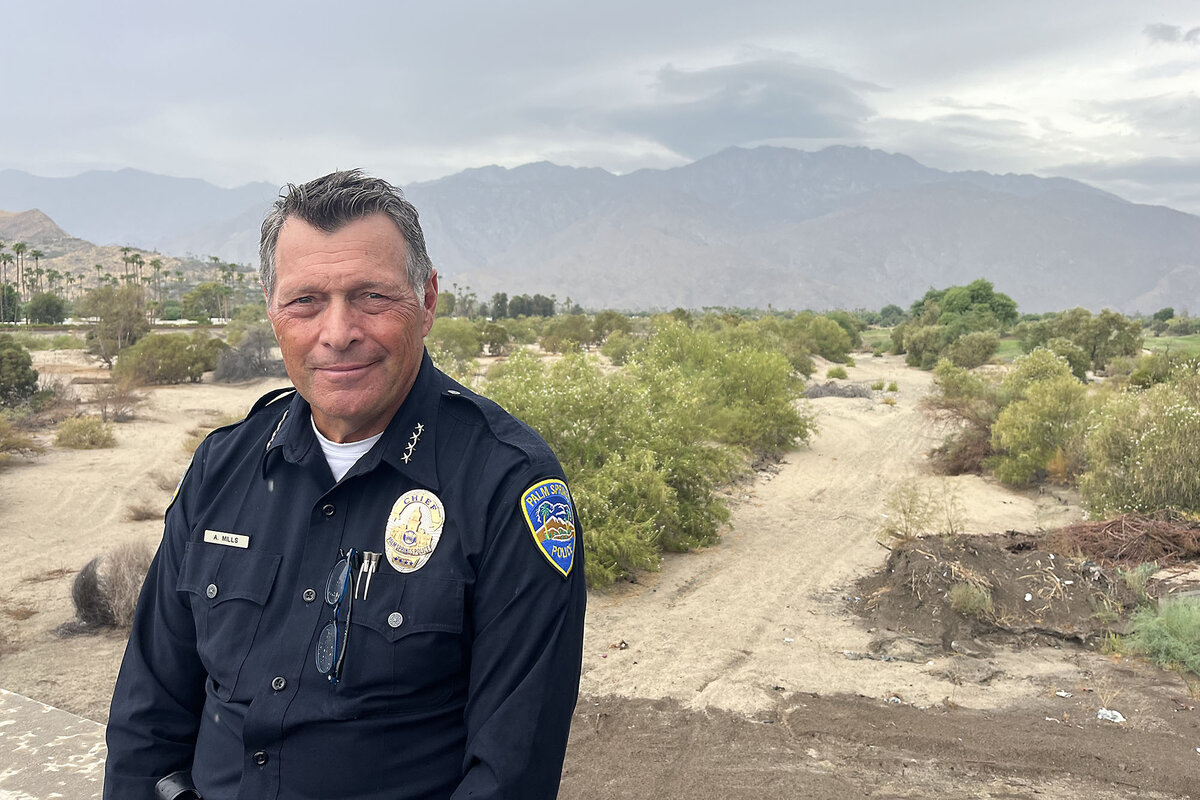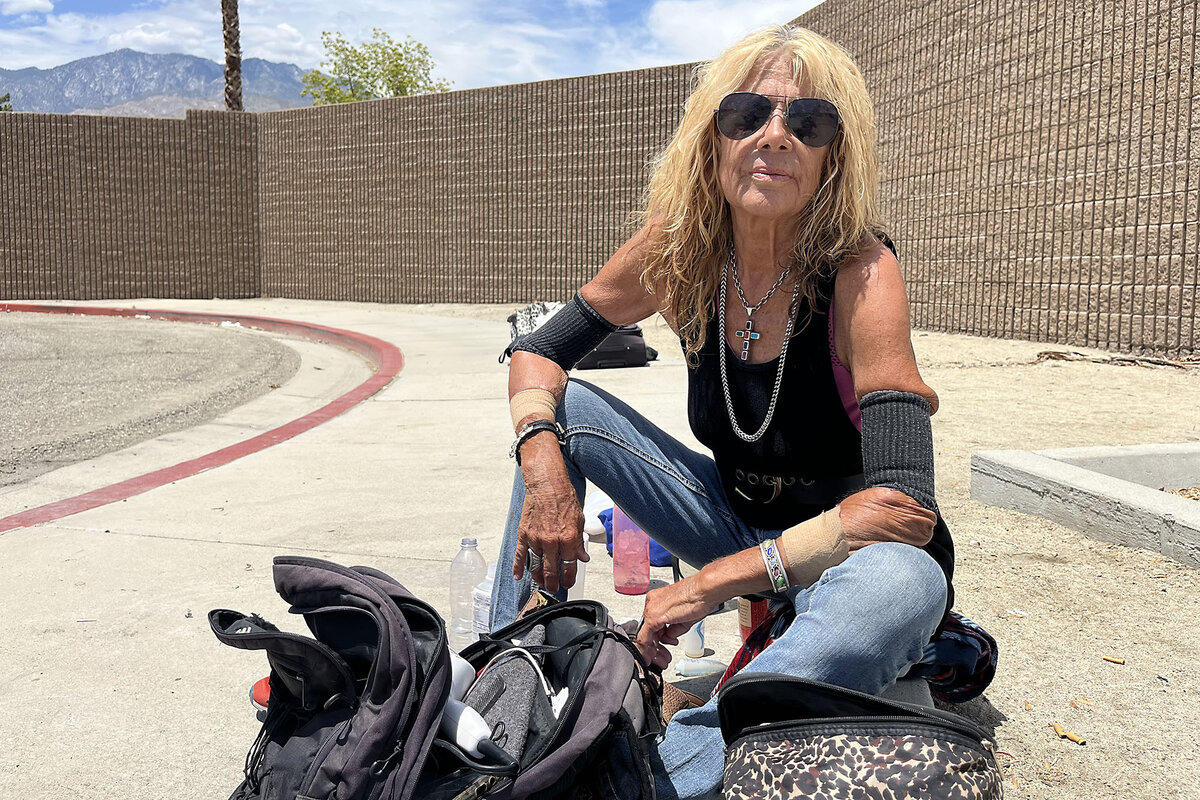After Supreme Court ruling, California strengthens homeless camp enforcement
Loading...
| PALM SPRINGS, Calif.
California, the epicenter of homelessness in the United States, is trying to find its footing after the Supreme Court this summer gave localities more power to enforce anti-camping rules.
The court’s ruling upholding the enforcement measures of the city of Grants Pass, Oregon, allows local governments to penalize people for sleeping and camping outdoors – even if there is no place to shelter them.
With that new authority, cities like San Francisco are taking a more “aggressive” approach, as Mayor London Breed puts it. Police and street cleaners are instructed to prevent tents from popping back up after encampments are cleared; outreach workers must first offer people experiencing homelessness transportation out of town as city shelters near capacity.
Why We Wrote This
California, which has America’s largest homeless population, is taking a harder tack on enforcement – but some cities are pairing that with more support.
Mayor Breed is in step with California Gov. Gavin Newsom’s July 25 “no more excuses” executive order that directs state agencies to develop guidelines and move urgently toward removing encampments on state property. The order encourages local city and county governments to take similar action. While he can’t force local compliance, he warned last week that he would direct money away from counties if he did not see “demonstrable results” by year’s end. About a third of the nation’s homeless people live in California.
The governor may be moving fast, but some jurisdictions are balking. The Board of Supervisors for vast Los Angeles County, for example, the most populous county in the nation, where 75,000 people are homeless, voted recently to reject fining or arresting people for sitting, sleeping, or lying in public spaces, as the Supreme Court ruling now allows it to do.
Instead, the county board affirmed its “care first” approach, in which outreach workers encourage people to come indoors, get supportive services, and ultimately move to permanent housing. For the first time in years, the number of people living on the streets in the region declined this year – dropping 5.1% in the county overall, and 10.4% in Los Angeles.
One particular success in LA County is the coastal community of Redondo Beach, which since 2019 has halved its homeless population. That has come through innovations like individual tiny shelters, restricted camping hours, and a homeless court that convenes outdoors, according to Michael Webb, the city attorney and point person on homelessness.
Localities are trying to find “the humane way and the effective way” to address homelessness in the wake of the Supreme Court decision, he adds.
“Everyone is in a ‘figure out where we are’ mode,” says Mr. Webb.
Stronger enforcement a “needed tool”
Even so, he supports the Supreme Court ruling and the governor’s executive order because stronger enforcement is a “needed tool” to keep people from sleeping or camping in public spaces, especially if they refuse shelter and services or have other housing options, he says. But “it would be a mistake if [enforcement] is used as a first resort.”
That would result in shifting, not solving, the problem, he explains. One city’s tougher measures can drive homeless people to a neighboring town with weaker enforcement. That’s why Mr. Webb put forward a “good neighbor pledge” – to be adopted by cities in the region – that offers shelter and services as a core strategy, while promising not to push those who need shelter to another town.
“Generally, I’ve heard nothing but positive” comments, he says, “because everyone’s worried about being on the receiving end” of the homeless population shift.
A recent study of three homeless hot spots in Los Angeles found that in places with encampment clearing, the homeless population declined – but only for two or three months.
“The people come back, [though] they might not have tents anymore,” says Sarah Hunter, director of the Rand Center on Housing and Homelessness, which conducted the study.
While Governor Newsom stressed the urgency behind encampment cleanup, he also said it needed to include “supporting and assisting the individuals.” The order calls for state agencies, such as parks, to adopt guidelines consistent with those of the state’s Department of Transportation, which has cleared more than 11,000 encampments from underpasses and other areas in the last three years. The guidelines must include advance notice of a cleanup, contact with homeless service providers, and storage of people’s belongings.
Coordinating moving and services
The state is providing billions of dollars for homeless services, housing, and encampment clearing. But Dr. Hunter says the governor is putting the cart before the horse, as not all of the resources have come online yet.
Meanwhile, politics play a “pretty substantial role,” she says, given the governor’s role on the national stage and Mayor Breed’s reelection bid. In addition, the Republican Party is using Democratic presidential nominee Kamala Harris of California as a punching bag for failed liberal policies.
In Palm Springs, which last month passed an ordinance to prevent encampments and sleeping in public places, police Chief Andy Mills is grateful for both the Supreme Court ruling and the governor’s executive order.
“The state has finally come to the realization that just housing alone is not going to work,” he says. “There has to be some enforcement also.”
When Chief Mills came to Palm Springs three years ago, he found that the top concern was not burglaries, traffic, or shootings. It was, by far, homelessness. He and his team focused on it with the relentlessness of the desert sun – taking a detailed census of homeless people; connecting them with shelter, services, family, and other locations; and clearing encampments by using existing laws against trespassing and starting fires.
Of the roughly 350 homeless people living year-round in Palm Springs in 2022, only about 100 “recalcitrant” people remain, according to city police. Police now have legal authority to tell people, “You cannot lie in the middle of the sidewalk in the middle of the day,” says Chief Mills.
Like Mr. Webb of Redondo Beach, the police chief says the high court has given him “one more piece of leverage” to move homeless people who refuse housing and services.
A new $40 million homeless navigation center
The city’s new ordinance won’t go into effect until a new $40 million housing and social services navigation center is completed for homeless people, probably in September. It offers 80 units of modular, transitional housing for individuals and families, and includes supportive services, a play area, green space, and a dog park.
Police describe their approach as “compassion first.” But there are also consequences.
If people violate the new ordinance, they have three options, says Chief Mills: the new navigation center (if there is space), another location (preferably their hometown or with family), or jail – at the police officer’s discretion.
“We are not solving homelessness,” says the police chief. “But people have to understand they’re full-grown adults like you and I. They need to be held accountable for their impact on our community.”
Donna Jones, a homeless woman sitting on a sidewalk near a cooling shelter with access to services, has no interest in the new navigation center – neither its large room with 50 beds that opened this spring, nor the individual units coming online. She says that she feels unsafe in group shelters. Small individual units strike her as “a little jail.”
“I’d rather sleep under the stars,” with occasional rejuvenating visits to Motel 6, she says. A self-described “trust fund baby” whose downfall was gambling, Ms. Jones has heard nothing of the Supreme Court ruling, governor’s executive order, or new city ordinance.
“I don’t think that’s right,” she says, when told about the court’s decision and the possibility of arrest. She perks up at the news that Los Angeles, her hometown, is not going to penalize people for sleeping outside. She wonders, How can anyone tell her where to live?











